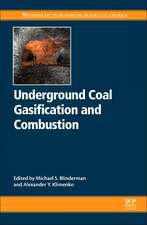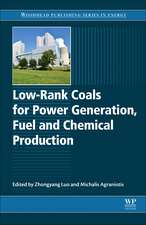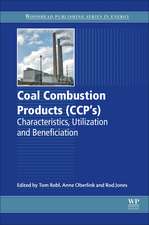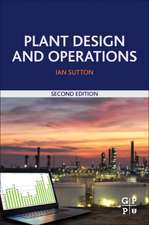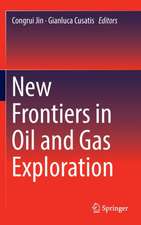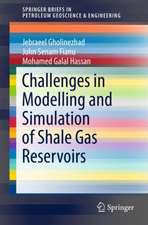Understanding Oil and Gas Shows and Seals in the Search for Hydrocarbons
Autor John Dolsonen Limba Engleză Paperback – 31 mai 2018
| Toate formatele și edițiile | Preț | Express |
|---|---|---|
| Paperback (1) | 791.09 lei 6-8 săpt. | |
| Springer International Publishing – 31 mai 2018 | 791.09 lei 6-8 săpt. | |
| Hardback (1) | 1233.06 lei 6-8 săpt. | |
| Springer International Publishing – 24 iun 2016 | 1233.06 lei 6-8 săpt. |
Preț: 791.09 lei
Preț vechi: 964.74 lei
-18% Nou
Puncte Express: 1187
Preț estimativ în valută:
151.37€ • 158.05$ • 125.28£
151.37€ • 158.05$ • 125.28£
Carte tipărită la comandă
Livrare economică 05-19 aprilie
Preluare comenzi: 021 569.72.76
Specificații
ISBN-13: 9783319806327
ISBN-10: 3319806327
Ilustrații: XIX, 486 p. 341 illus., 315 illus. in color.
Dimensiuni: 155 x 235 mm
Greutate: 0.7 kg
Ediția:Softcover reprint of the original 1st ed. 2016
Editura: Springer International Publishing
Colecția Springer
Locul publicării:Cham, Switzerland
ISBN-10: 3319806327
Ilustrații: XIX, 486 p. 341 illus., 315 illus. in color.
Dimensiuni: 155 x 235 mm
Greutate: 0.7 kg
Ediția:Softcover reprint of the original 1st ed. 2016
Editura: Springer International Publishing
Colecția Springer
Locul publicării:Cham, Switzerland
Cuprins
Introduction to the oil industry and oil show evaluation: a personal retrospective.- The basics of traps, seals, reservoirs and shows.- Drilling, mud logging, wireline logs and cores .- Understanding seals, pressures and hydrodynamics.- Quantifying seals and saturations—capillary pressure, pseudo-capillary pressure and quantitative show assessment.- Basic well log analysis, quick look techniques, pitfalls and volumetrics .- Using fluid inclusion data in exploration.- Shows and geochemistry: extracting more information from source rocks and hydrocarbons.- Building and testing migration models.- Appendices.- Common conversion equations and fluid classifications.- Constructing Winland pore throat graphs in Excel.- Equations in Excel to convert mercury-injection capillary pressure data to height above free water.- Equations in Excel to make pseudo-capillary pressure curves.- Converting paleogeographic maps or shapefiles in ARCGIS to grids.
Recenzii
“It becomes an easy reference guide for earth scientists who have practiced their “art” for many years as well as the industry newcomer. … the book is a map on how to improve the search for hydrocarbons. The content of this book will be invaluable to our industry for years to come. The author has done us a great service.” (John B. Thomas, AAPG Bulletin, Vol. 101 (8), August, 2017)
“Mr. Dolson’s book is a long overdue work, filling a critical knowledge gap that has spanned decades of exploration and has resulted in billions of dollars in dry holes. … His years of experience with major oil companies, as well as teaching and consulting, provide an exceptional perspective on this critically important subject. … this book is an absolute must read and keep for explorationists at all levels as well as managers and engineers. … this book is highly recommended.” (David Blanchard, GEOExPro, Vol. 14 (3), May, 2017)
“This is intended as a text for professional geologists beginning a career in oil and gas exploration. The work is based on the author’s more than three decades of experience, mostly in Egypt, India, and Russia. … book is divided into nine chapters, each leading with an abstract and ending with a summary and references. Chapters are profusely illustrated with charts, diagrams, and occasional photos, mostly clear and easily readable … . Summing Up: Recommended. Lower- and upper-division undergraduates; professionals.” (P. Larsen, Choice, Vol. 54 (6), February, 2017)“Mr. Dolson’s book is a long overdue work, filling a critical knowledge gap that has spanned decades of exploration and has resulted in billions of dollars in dry holes. … His years of experience with major oil companies, as well as teaching and consulting, provide an exceptional perspective on this critically important subject. … this book is an absolute must read and keep for explorationists at all levels as well as managers and engineers. … this book is highly recommended.” (David Blanchard, GEOExPro, Vol. 14 (3), May, 2017)
Notă biografică
John C. Dolson, Director, DSP Geosciences and Associates, LLC and Senior Geological Advisor, Delonex Energy (London). He has 35+ year’s oil and gas exploration both domestic and international. He has served as Vice President of the American Association of Petroleum Geologists (2006/2007), and was Senior Geological Advisor for TNK-BP (Russia), Amoco/BP before starting DSP Geosciences in 2008. Mr. Dolson has supervised hundreds of geoscientists and has been responsible for prospect generation as well as training and development, with 15 years spent living abroad (Egypt, London, and Moscow). He has served as an adjunct faculty member at the University of Miami (Fla), Colorado State University, Royal Holloway University (London) and geological advisor to Moscow State University and Tyumen State University (Russia). He has an extensive publications list including several landmark papers for AAPG dealing with stratigraphic traps and regional petroleum potential assessmentand has authored books on Black Canyon of the Gunnison National Monument in 1982 and on unconformity analysis with the Rock Mountain Association of Geologists in 1994.
Textul de pe ultima copertă
The book covers in detail the ways to differentiate between residual and continuous phase (trapped) oil, false shows and shows associated with source rocks and tight oil and gas reservoirs (potential unconventional targets). Case histories of finding by-passed plays, new migration routes and new fields will be shown for each major topic. All of these materials are presented in the context of modern petroleum systems modeling of migration and charge, with an emphasis on how to calibrate and test the validity of the computer models. Lastly, exercises are included to reinforce the concepts in each chapter.
Caracteristici
A unique guide to how to use currently available oil and gas show information Closes the gap between interpretive understanding of hydrocarbon shows by computer applications and seismic interpretation, and rigorous testing with fundamental information from the wells themselves Examples of spreadsheets used to facilitate quantitative analysis are included Includes supplementary material: sn.pub/extras

